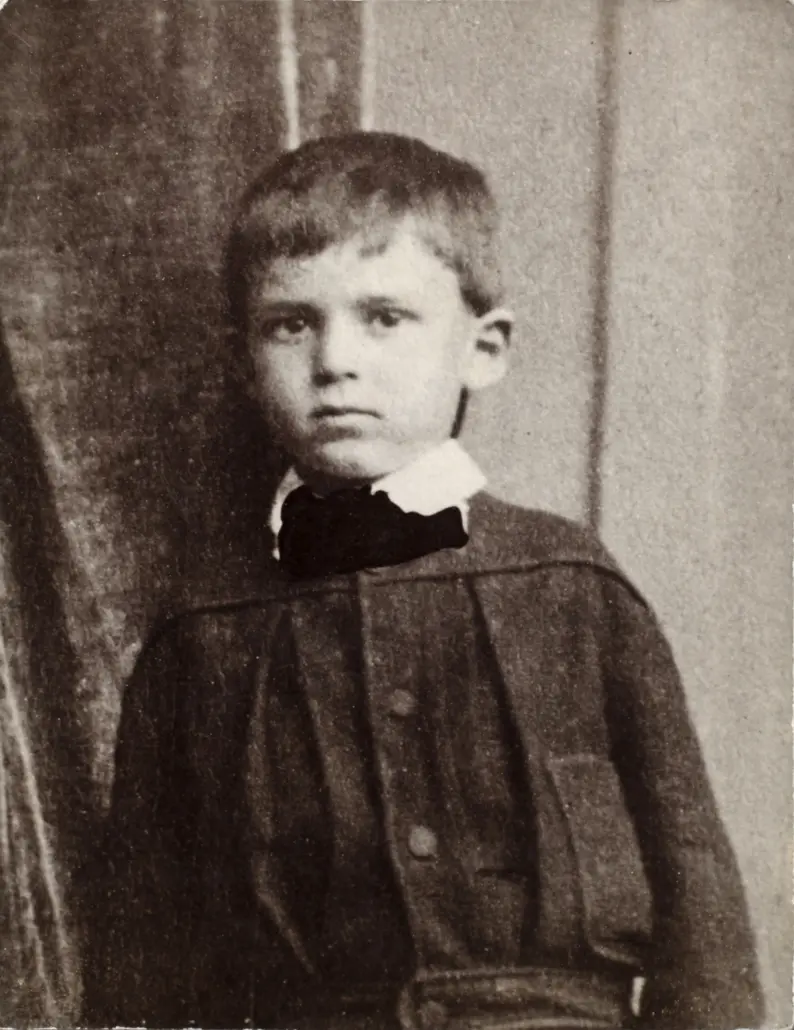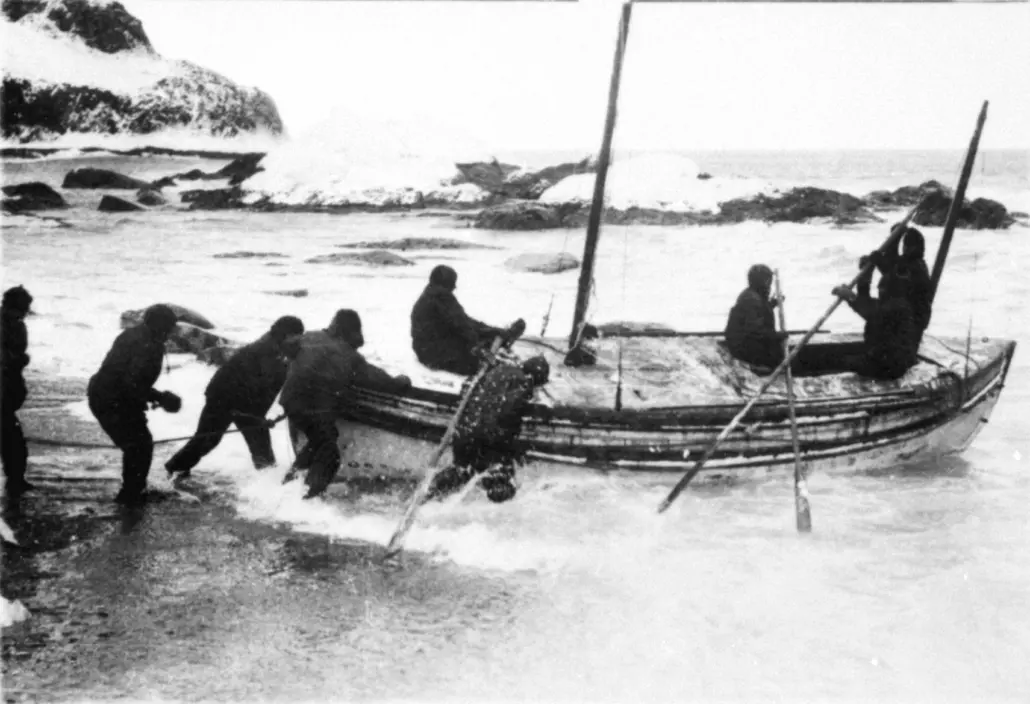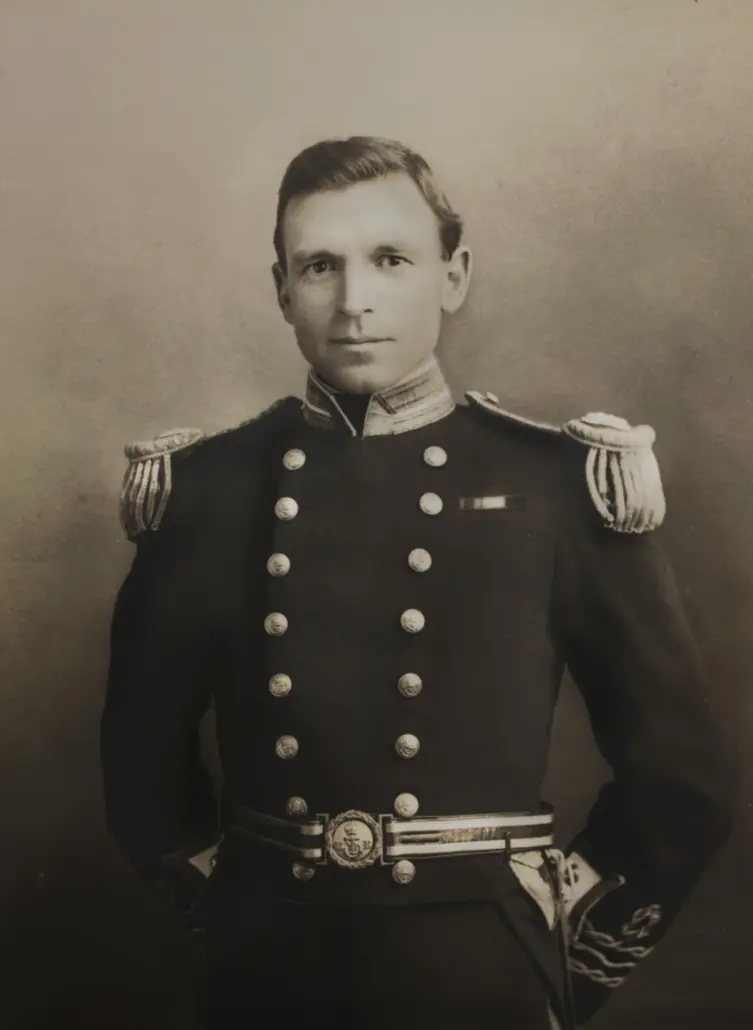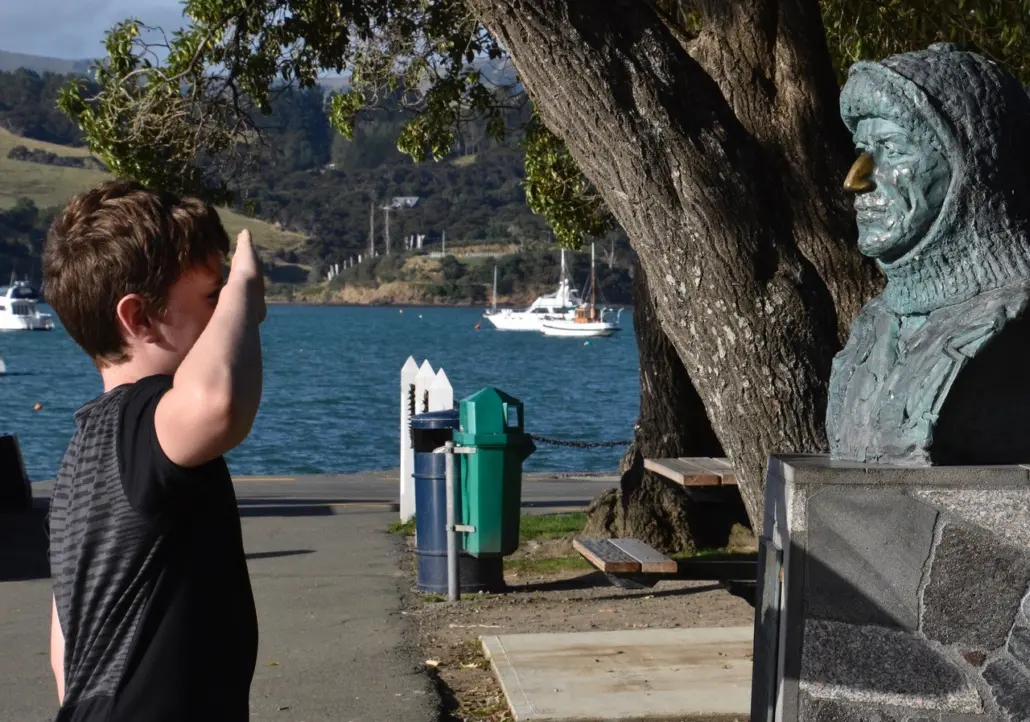Frank Arthur Worsley was born in Akaroa in February 1872.
He was born with an adventurous spirit – as a child, Frank and his brother were asked to deliver a horse to the end of the harbour, and instead of walking back, they decided to continue on to Wainui, build a raft from harakeke reeds, a stick for a mast and their jackets for sails, and paddle back home to Akaroa.
A few years later, the family moved to Christchurch where Frank started at Fendalton School. At 15, he wanted to pursue a life at sea and his first voyage took him from Lyttelton to London. He was known for pushing the boundaries and one day climbed the 140-foot mast barefoot and stood balancing at the top.
The Last 36
The Last 36 was filmed by James Blake during the Inspiring Explorers Expedition™ centenary crossing of South Georgia in 2015. The short film tells the story of Antarctic Heritage Trust’s Inspiring Explorers’ Expedition to retrace the epic journey of Shackleton, Worsley and Crean, as they crossed South Georgia for the first time in a desperate bid to save the lives of their stranded Endurance crew mates.
Frank Worsley. Photographer Unknown, C.1877-1880 ©Frank A. Worsley Collection, Akaroa Museum. Donated by Patrick Bamford.
In 1914, with nearly 27 years’ experience behind him, Sir Ernest Shackleton hired Worsley on the spot for his Imperial Trans-Antarctic Expedition and made him captain of the expedition ship Endurance. The expedition party were forced to abandon the ship in October 1915 after the Endurance was crushed by ice floes in the Weddell Sea.
Worsley’s role in ensuring the survival of the men was crucial as he navigated their three lifeboats to Elephant Island where they repurposed their largest boat, the James Caird, in the hopes that they could use it to get them to the whaling station at South Georgia, 1300km away.
Frank Worsley and his crew launching the James Caird from Elephant Island. Imperial Trans-Antarctic Expedition (Endurance), 1914-17 ©Frank Hurley Photograph Canterbury Museum 1917
Four men joined Shackleton and Worsley on this journey. In what has been described as ‘an astonishing feat of navigation’, Worsley managed to safely steer the James Caird to South Georgia amongst strong winds and powerful currents with only four sightings over the 16-day voyage. This journey is still referred to as one of the most heroic ocean voyages of all time and its success came solely down to Worsley’s navigation skills and unbreakable perseverance under the most difficult circumstances.
When the party arrived on the west of South Georgia on 10 May 1916, the journey was still not over. Worsley, Shackleton and Thomas Crean made a grueling 36-hour overland journey to reach the whaling station on the opposite side.
Commander F. A. Worsley (Inscr. Verso). ©Photographer Unknown, C.1920. Frank A. Worsley Collection, Akaroa Museum. Donated by Patrick Bamford.
Less than a day later, Worsley set out to rescue the other members of the lifeboat party. When they finally reached the remaining men on Elephant Island after four attempts over four months, they found all of them still alive.
Worsley joined Shackleton again in 1921 as navigator and hydrographer on the expedition ship Quest. It was on this voyage that Shackleton died in South Georgia on 5 January 1922. It was also Worsley’s last expedition to Antarctica, but he wrote and lectured on his Antarctic adventures for many years to come.
Worsley died in February 1943, weeks before his 72nd birthday, and was honoured with a full naval funeral. His ashes were scattered at sea.
His legacy lives on in Akaroa, where he is commemorated with a bronze bust and the Akaroa Museum shares many details on his life.
Salute to adventure. © Angus Davis / AHT





